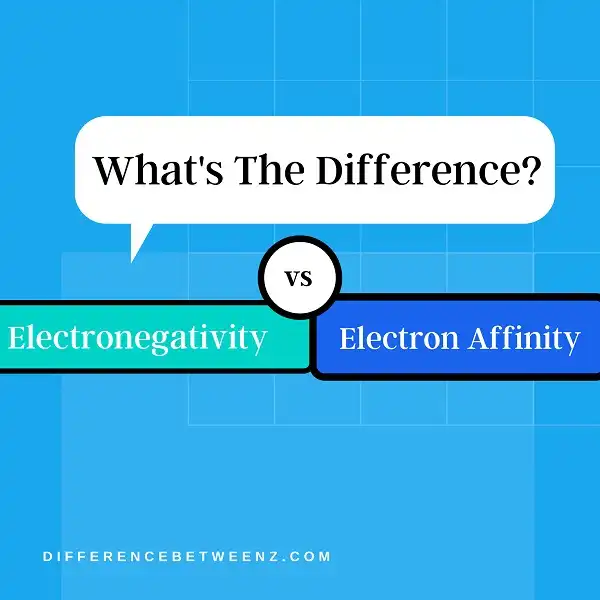In chemistry, there are two important concepts that are related to the electron: electronegativity and electron affinity. Electronegativity is a measure of how strongly an atom attracts electrons to itself. Electron affinity, on the other hand, is a measure of how much an atom wants to gain electrons. In this blog post, we will explore the difference between electronegativity and electron affinity, as well as provide some examples of each.
What is Electronegativity?
In chemistry, electronegativity is a measure of the propensity of an atom to attract electrons to itself. Electronegativity values have been measured for the elements and are available in reference tables. The higher the value, the more an atom will attract electrons to itself. Electronegativity values are used to predict the direction of electron flow in a chemical reaction. More electronegative atoms will tend to pull electrons away from less electronegative atoms, resulting in a net flow of electrons from the less electronegative atom to the more electronegative atom. This can be used to explain the behavior of certain molecules and ions in solution. For example, water molecules are held together by hydrogen bonding, which is a result of the Electronegativity difference between oxygen and hydrogen atoms.
What is Electron Affinity?
Electron affinity is a measure of the tendency of atoms or molecules to accept electrons into their valence shells. It is typically associated with elements on the periodic table since this determines where electrons are located in an atom and how willing that atom is to receive more electrons. Electron affinity is related to several important concepts in chemistry, including ionization energetics, chemical reactivity, and acid-base properties. Typically, the greater an atom’s electron affinity, the more likely it will gain another electron and become negatively charged. Understanding electron affinity can help chemists to better predict how different chemical reactions may occur. Additionally, this concept can be used as a tool for designing new materials with specific electrical properties. Overall, electron affinity is a key concept that helps us to better understand both theoretical and practical aspects of chemistry.
Difference between Electronegativity and Electron Affinity
While many people use the terms “electronegativity” and “electron affinity” interchangeably, there are actually some important differences between these two concepts. Electronegativity refers to the attraction between an atom and a bonding pair of electrons, whereas electron affinity refers to the tendency of atoms to attract more electrons into their orbitals. Electronegativity is defined as a property of specific atoms, whereas electron affinity is a consideration that applies to all atoms in molecules or compounds. Ultimately, it is important to understand these two concepts separately in order to effectively apply them in various scientific contexts.
Conclusion
Electronegativity and electron affinity are two important terms in chemistry. However, they are often confused with one another. In this blog post, we have explained the difference between these two concepts. We hope that this information was helpful and informative.


